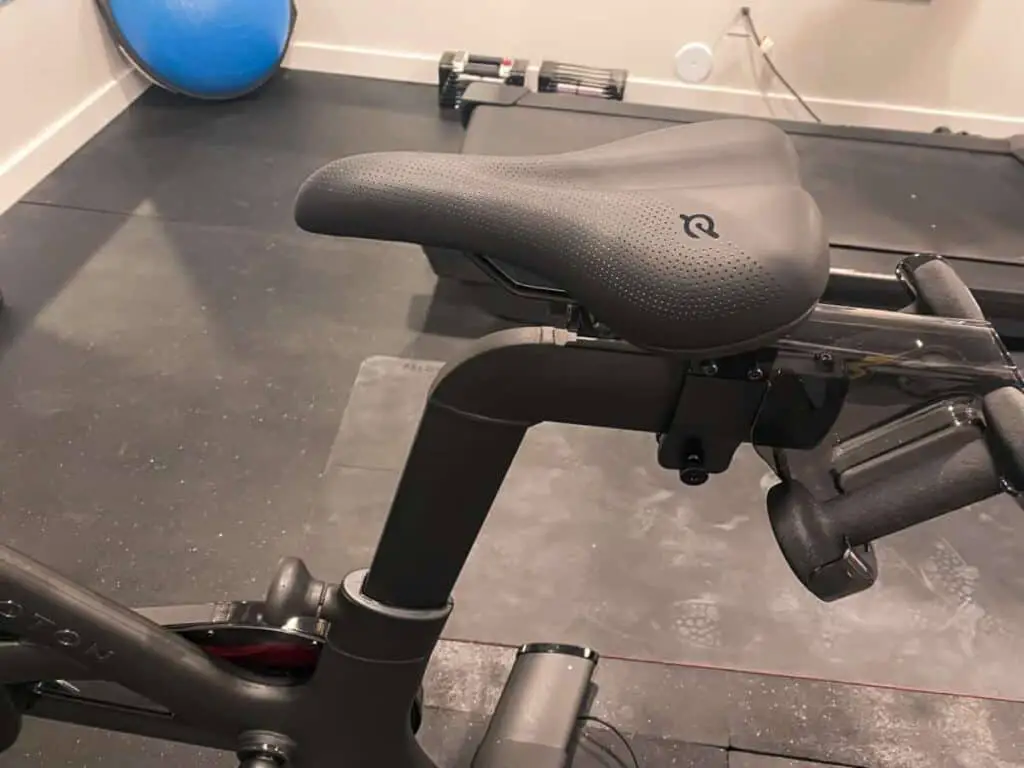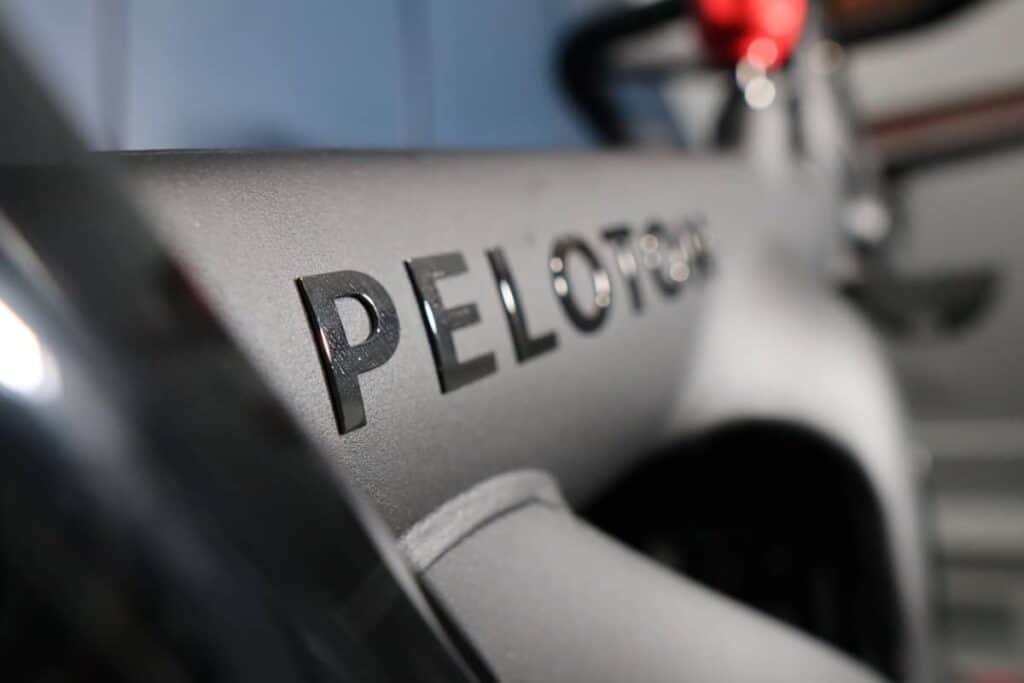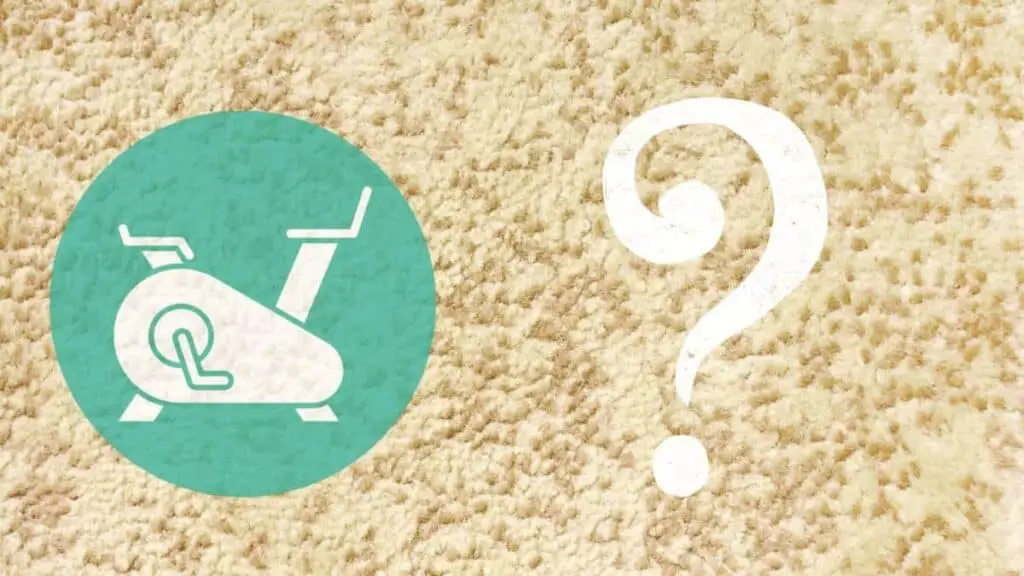You may think that once your Peloton bike is all hooked up and switched on that you are ready to jump onto the platform and ride, but there is one last step to consider before you do that many people forget about, don’t bother doing, and don’t even know why or how to do it; the adjustment of your seat and handlebar.
To adjust a Peloton seat height (and depth), you will need to locate the knob, loosen it (turn left), move the seat to the correct position, then tighten the knob again (turn right). Align the seat height to your hip bone and the seat depth to the middle or a forearm’s length from the handlebars.
Discover exactly how to adjust your seat height, depth, and handlebar height correctly no matter what your size, weight, height, and age are and understand why it is important to do so and the consequences if you choose not to make the proper adjustments.
How to adjust Peloton bike seat
Once your Peloton arrives and is set up by either yourself or the technician who delivers it, there is only one last thing to do: set it up so that you can ride comfortably.
Jumping onto the Peloton without configuring the seat and handlebars for your height and size will result in awkward cycling, fatiguing quickly, and even in some cases, pain and injury.
There are three adjustable elements on your Peloton: seat height, seat depth, and handlebar height.
How to adjust Peloton seat height?

First, loosen the seat height knob to adjust the seat height. This is located at the very base of the seat, just above the belt guard.
To loosen the height adjustment knob, you will rotate it counter-clockwise (to the left), and similarly, to fasten it, you will rotate it clockwise (to the right).
Once loosened, you will be able to adjust the seat height either up or down, depending on your preference.
It is always recommended for beginners and experienced cyclists alike that you adjust the seat to align with the hip bone (we will discuss why that is following this). Take note that adjusting the seat height goes for the Peloton and the bike+ models.
Once it is aligned with your hip bone, you should tighten the knob until it is securely in place and is unable to come loose.
Why do you need to adjust the seat height of a Peloton bike?
It is important to set the height of your seat because if you set it too high, then you will be unstable when riding, and if set too low, you will be putting a lot of stress on your knees, which means you are not receiving enough power form your legs when you push.
The proper seat height is where you have a 30% – 35% bend in your knee when your leg is extended fully to the lowest point of your pedal.
This is why adjusting it to your hip height is a standard practice because 90% of the time, when setting the seat height aligned with your hip bone, you will achieve this position.
How to adjust Peloton seat depth?
After adjusting the seat height, you will need to adjust the seat depth. This means you will need to move the seat either forwards or backward, depending again on your preference.
For beginners, it is suggested that the front of the seat should be a forearms distance away from the handlebars. If you feel that the seat is too close in this position, then we suggest you place it in the middle to start off with.
Both this and the seat height configurations are just standard positions that work well and are there to help you set up your bike. You do not want to adjust the height and depth to awkward positions. Once you are comfortable and after a couple of rides, you are more than welcome to adjust the depth and height to your liking.
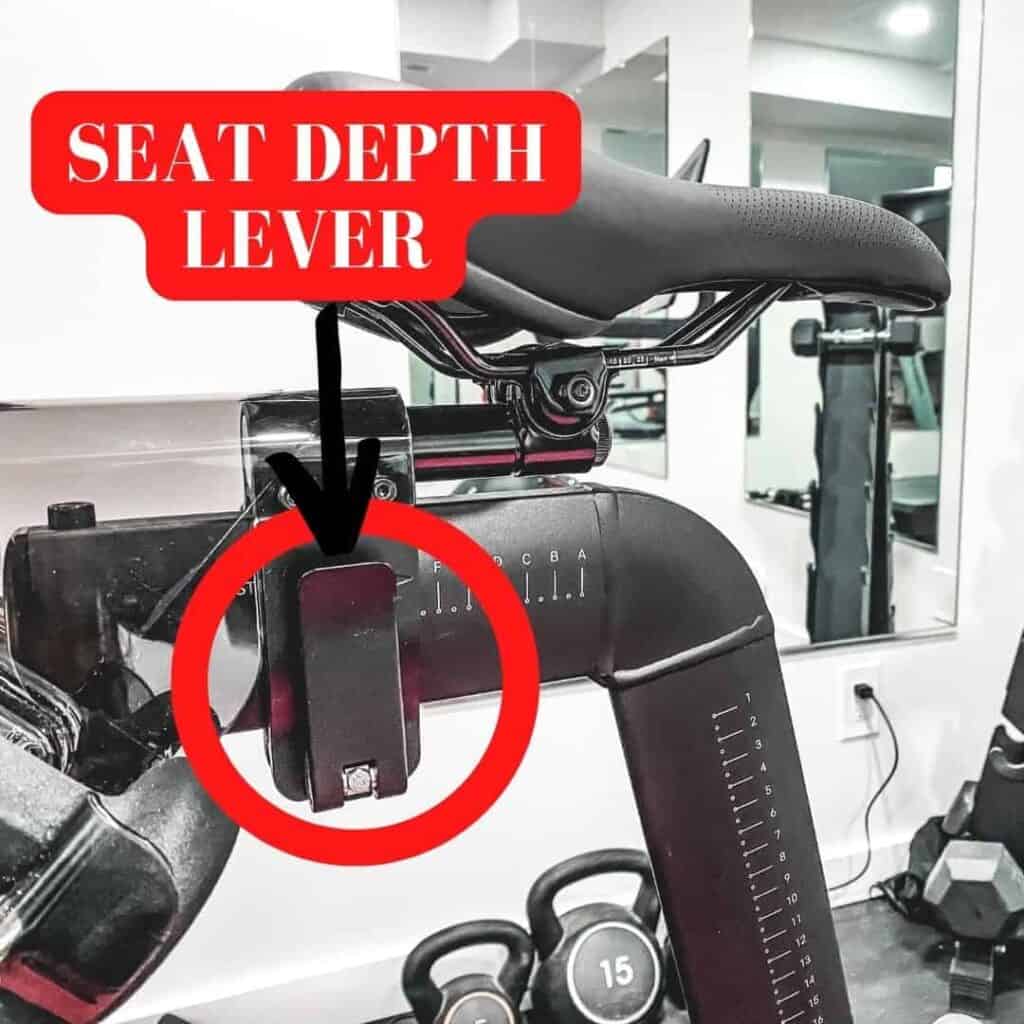
To adjust the seat depth, locate the lever located underneath the seat. To loosen it pull down on the level and adjust the seat forward or back depending on your specific needs. Once you find the sweet spot lift the lever back into place, piece of cake!
Why do you need to adjust the seat depth of a Peloton?
Seat depth is just as important as seat height. You do not want to be bent over when you cycle because that will cause strain on your lower back. You want to be in a position where you are able to reach the handlebars with your arms, and your back is relatively straight.
You do see professional cyclists bend over when they are sprinting and such, but for beginners, it is necessary to prevent an injury, and lower back injuries are synonymous with individuals who have their seat adjusted too far back.
How to adjust Peloton handlebar height?
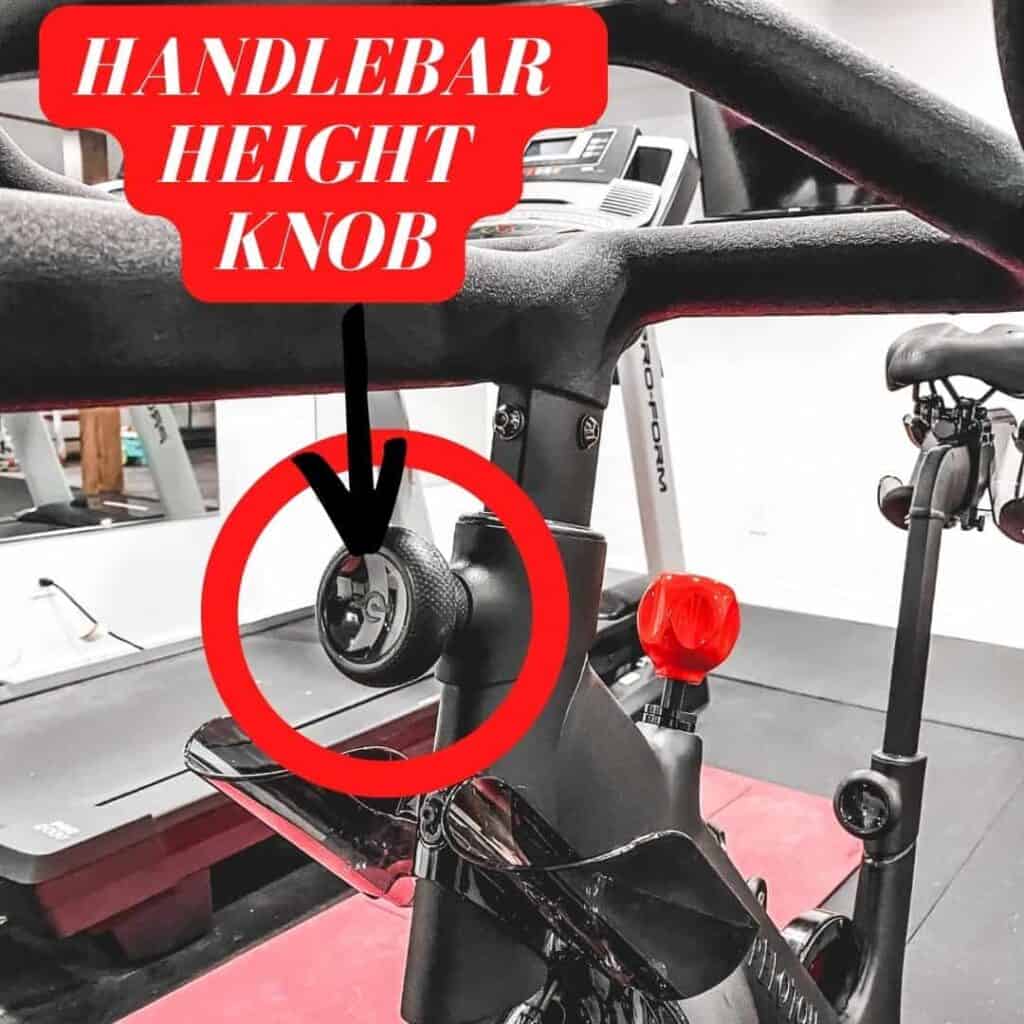
The last constituent for setting up your bike entails that of adjusting the handlebar height. As with the seat, you will adjust it by loosening the handlebar knob which is located underneath the handlebars at the front of the bike.
Once again, turn the knob to the left to loosen it and to the right to tighten it. Once the knob is loosened, you are able to pull the handlebars down or up into the desired position.
Take note that the screen is attached to the handlebars, and as such, you should be careful when adjusting the height.
For beginners, it is recommended that you place the handlebars at their highest position. Once the handlebars have been adjusted, make sure to tighten the knob once again.
Why do you need to adjust the handlebars of a Peloton?
The reason for adjusting the height of the handlebars to their highest position for beginners is to avoid injury and to reduce stress and fatigue.
As with placing the seat towards the front, raising the handlebars to their highest position will give you the capability of sitting relatively straight up with a good posture. This will reduce straining and fatigue on the lower back allowing you to ride much more comfortably and with ease.
Conclusion
It is pretty easy setting up your Peloton bike in order to achieve a comfortable position to ride in that many individuals overlook, especially beginners. It is important to adjust the seat height and depth along with the handlebar height so that you are seated correctly when riding.
Failure to do so at any level, whether you are a professional or beginner, will result in stress on your joints, fatigue, pain, and injury.
Adjusting your seat and handlebars is just a matter of loosening the associated lever or knob, and then moving it into the desired position, and tightening the knob again.

